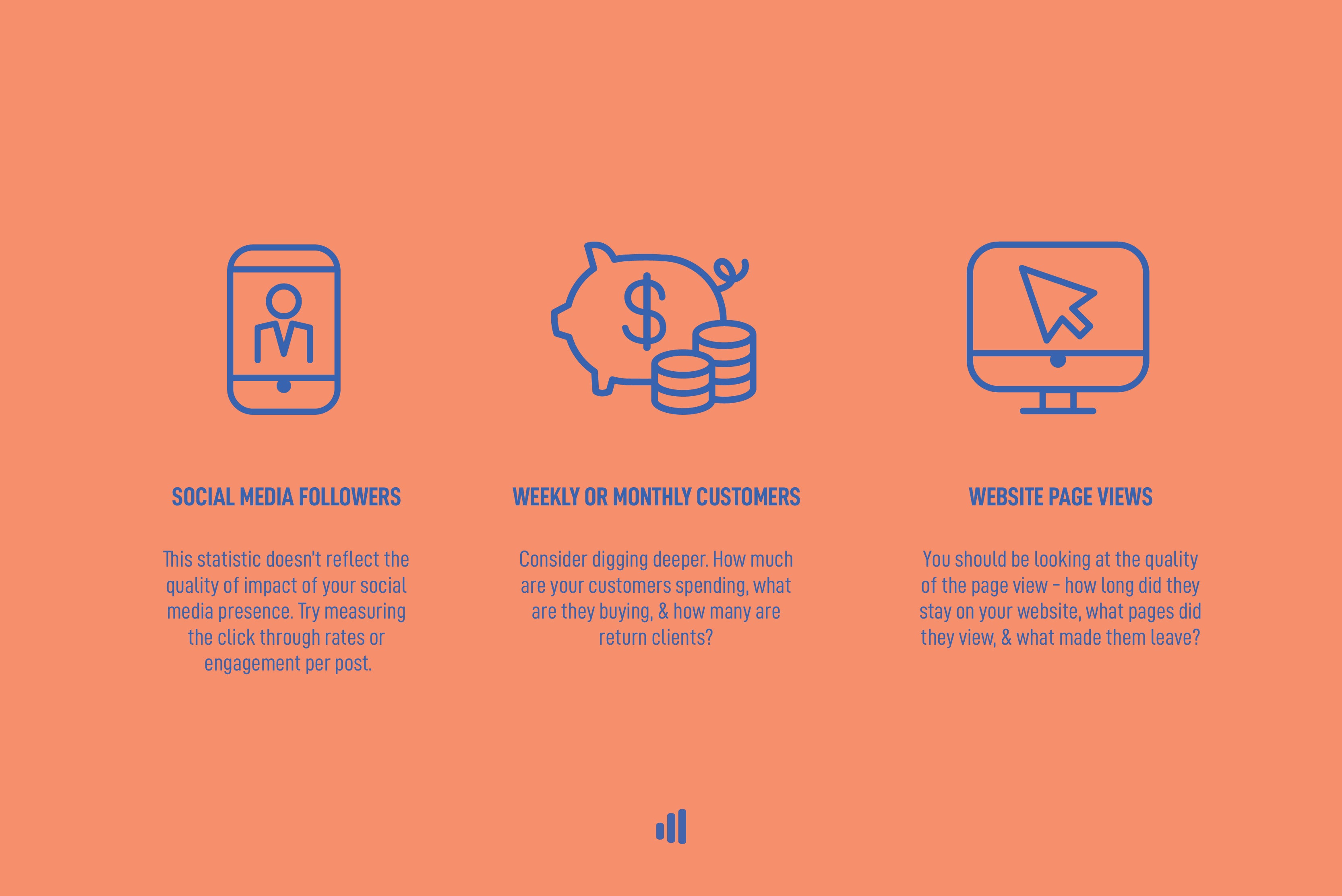Vanity metrics are essentially just that – specific data that makes us feel good. So what analytics are considered to be useful, and which should you ignore?
Considered to be quite fickle in nature, vanity metrics is considered to be shallow data drawn from the analytics function on most social media or web platforms. We get it – you’re busy, and the boss is pressuring you for data that “looks good”. You’ve got 100 new likes a month. Did you mention that only 10% of the new acquisitions engaged with your posts? Probably not.
While there’s nothing wrong with a little pride in your business or brand’s growth online, your efforts may go to waste unless you are tracking actionable metrics. It’s important to pay attention to the numbers that help your business plan for the future – and not just “fluff” that makes you feel good in the present.

What are examples classified as vanity metrics?
That’s the thing – vanity metrics don’t discriminate. The term doesn’t include a specific range of data or analytical functions. Instead – a section of data that makes you look like a rockstar to others but does not help you contribute to a future growth strategy – would be considered to be a vanity metric.
If you’re trying to measure data effectively, key examples to look out for on what can be a vanity metric include:
- Social Media Followers – This statistic doesn’t reflect the quality of impact of your social media presence. It’s not uncommon for a brand to collect 10,000 followers on a platform like Instagram, only to have 10% of those followers actually engage with your content. It may feel like a large following helps to “validate” your brand, but do they actually translate into web visitors or sales? Instead, try measuring the click through rates or engagement per post on your social media channels for more tangible and usable data.
- Weekly Or Monthly Customers – While this is a great way to compare your running totals at a quick glance, it can be far too broad or miss data that could be far more useful to your brand. Instead, consider digging deeper. How much are your customers spending, what are they buying, and how many are return clients? This will ultimately help you with fine tuning your product or service, and helps to “hone in” on the customers that are more likely to actually buy something.
- Website Page Views – This is a common one, and one of the easiest ways to feel like you’re crushing it on the world wide web. Just because someone visits your website, doesn’t mean that they are a viable lead or sales prospect. In fact, you should be looking at the quality of the page view – how long did they stay on your website, what pages did they view, and what made them leave? This is particularly important data if you are investing in “pay per click” style online marketing, as you could quite literally be throwing your money away.
 When you next sit down to measure your data via analytics, instead of taking the “easy route” – think in terms like optimisation metrics or actionable metrics. Usually this will require a little more digging, but generally results in data that will help to drive measurable results for your brand or business.
When you next sit down to measure your data via analytics, instead of taking the “easy route” – think in terms like optimisation metrics or actionable metrics. Usually this will require a little more digging, but generally results in data that will help to drive measurable results for your brand or business.
If you’re looking to improve your engagement rate on your brand’s social media platforms, this is often linked to producing quality content. Luckily, this is exactly what we specialise in at Content Hive – so why not book in your free discovery call with us today.


